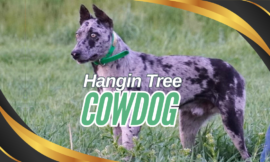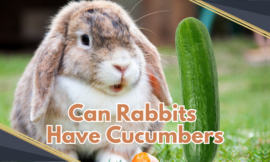The pumpkin snake is an intriguing reptile with a unique name that sparks curiosity. Whether you’ve come across this name in the wild or are considering it as a potential pet, the pumpkin snake has many fascinating qualities. From its vibrant color variations to its behavior in the wild, the pumpkin snake offers much to explore and understand.
In this post, we’ll uncover 5 fascinating facts about the pumpkin snake, its habitat, diet, and behavior, and provide you with all the information you need if you are considering caring for this unique reptile.
1. What Is a Pumpkin Snake?
The term pumpkin snake refers to certain snake species known for their bright, orange or reddish hues that resemble the color of a pumpkin. While the name “pumpkin snake” is more colloquial than scientific, it often refers to snakes like the corn snake (Pantherophis guttatus) or similar non-venomous species with striking orange patterns.
These snakes are primarily found in North America and are admired for their vibrant coloring, making them popular in the pet trade. The corn snake, often associated with the “pumpkin snake” name, is a non-venomous species that is docile and easy to handle, making it ideal for both novice and experienced reptile enthusiasts.
Corn snakes are often confused with the venomous copperhead snake because of their similar coloring, but unlike copperheads, pumpkin snakes pose no threat to humans and are commonly kept as pets due to their gentle nature.
2. Top 5 Interesting Facts About the Pumpkin Snake
The pumpkin snake has a variety of interesting features that set it apart from other snakes. Here are the top 5 fascinating facts about the pumpkin snake:
1. Beautiful Color Variations
- The pumpkin snake is well-known for its striking colors, ranging from orange to reddish-brown. These color patterns mimic the hues of pumpkins, hence the name. Some pumpkin snakes also have black markings that further highlight their vibrant colors, making them stand out in both the wild and captivity.
2. Non-Venomous and Safe
- Unlike many other snakes with bright coloration that typically signal venomous species, the pumpkin snake (like the corn snake) is non-venomous and safe for humans. This makes them a favorite among those who are looking for a pet snake that is easy to care for and handle without the danger of venomous bites.
3. Great at Pest Control
- In the wild, pumpkin snakes play an important role in controlling pest populations, particularly rodents. They are excellent hunters, using their constricting abilities to subdue prey like mice, which makes them valuable in agricultural areas.
4. Mimicry for Protection
- The bright colors of the pumpkin snake serve as a form of mimicry, helping them resemble more dangerous snakes like the copperhead. This mimicry helps deter potential predators, even though the pumpkin snake itself is harmless.
5. Long Lifespan in Captivity
- When properly cared for, pumpkin snakes can live up to 15-20 years in captivity. Their relatively long lifespan, along with their calm demeanor, makes them a great choice for reptile enthusiasts who are looking for a long-term companion.
These fascinating facts highlight why the pumpkin snake has become a popular and beloved reptile among snake enthusiasts and pet owners alike.
3. Pumpkin Snake Habitat: Where They Live and Thrive
In the wild, pumpkin snakes (like the corn snake) are commonly found in North America, particularly in the southeastern United States. They thrive in a variety of habitats, including forests, grasslands, and agricultural fields. These snakes are adaptable and can be found in areas where they have access to cover and an abundance of prey.
1. Forested Areas
Pumpkin snakes prefer forested environments where they can find plenty of hiding spots, such as under logs, rocks, or in leaf litter. These snakes are often nocturnal, meaning they are more active during the night when temperatures are cooler, and they are less likely to be spotted by predators.
2. Agricultural Fields
Pumpkin snakes are commonly found in fields and farmlands, where they hunt small rodents like mice and rats. Their presence in these areas helps farmers by naturally controlling the rodent population, reducing the need for chemical pest control.
3. Urban Environments
Due to their adaptability, pumpkin snakes can sometimes be found in suburban and urban areas, especially in backyards, gardens, or near barns where they can hunt for rodents and other small prey.
In captivity, replicating their natural habitat with the right temperature, humidity, and hiding spots will ensure they thrive as pets.
4. Pumpkin Snake Care: Diet, Housing, and Maintenance
If you’re considering keeping a pumpkin snake as a pet, providing the right care is essential to ensure its health and well-being. Here’s a complete guide to pumpkin snake care:
1. Diet
Pumpkin snakes are carnivorous and primarily eat small rodents such as mice. In captivity, feeding them frozen-thawed mice is the safest and most convenient option. Feed younger snakes once every 5-7 days and adults once every 7-10 days. Always ensure the prey is appropriately sized for the snake to prevent any health issues.
2. Housing
A 20-40 gallon terrarium is typically suitable for an adult pumpkin snake. Ensure the enclosure is well-ventilated and has a secure lid to prevent escapes. Provide plenty of hiding places, such as caves or hollow logs, to make the snake feel secure.
3. Temperature and Lighting
Maintain a temperature gradient within the enclosure, with a basking area between 85-90°F and a cooler area around 75-80°F. Use a heat lamp or heat mat to provide warmth, and include a thermometer to monitor the temperature. Since pumpkin snakes are nocturnal, they do not require UVB lighting but do benefit from a regular light cycle for day and night.
4. Humidity
Pumpkin snakes do not require high humidity, but a moderate level of 40-50% is ideal. Mist the enclosure lightly when necessary, especially during shedding periods, to help maintain proper humidity.
5. Substrate and Cleanliness
Choose a substrate like aspen shavings, newspaper, or coconut fiber that allows the snake to burrow. Clean the enclosure regularly by removing waste and replacing soiled substrate to maintain hygiene and prevent any health issues.
By following these care guidelines, you can provide a safe and comfortable home for your pumpkin snake, ensuring it stays healthy and active.
5. Are Pumpkin Snakes Venomous? What You Need to Know
One of the most common questions about the pumpkin snake is whether it’s venomous. The good news is that pumpkin snakes, like the corn snake, are completely non-venomous and pose no threat to humans. This makes them an excellent choice for both beginner and experienced reptile owners.
Pumpkin snakes kill their prey by constriction rather than using venom. They wrap their bodies around the prey and squeeze until the animal suffocates, making it safe for the snake to consume. This method of hunting is typical of many non-venomous snake species.
Because they are docile and easy to handle, pumpkin snakes are popular pets, especially for those who are new to owning reptiles. With proper care and gentle handling, they can become quite accustomed to human interaction.
6. Pumpkin Snake Behavior: What to Expect
The pumpkin snake is known for its docile and gentle temperament, making it an ideal pet for reptile lovers who enjoy handling their snakes. Here are some typical behaviors to expect from a pumpkin snake:
1. Nocturnal Activity
Pumpkin snakes are primarily nocturnal, meaning they are most active during the evening and night. During the day, they tend to hide or rest in secure spots within their enclosure. Providing plenty of hiding places will make them feel more comfortable and secure.
2. Docile Nature
Pumpkin snakes are generally calm and non-aggressive, making them easy to handle. With regular handling and gentle care, they can become used to human interaction, and they rarely bite unless they feel threatened.
3. Burrowing Behavior
These snakes enjoy burrowing in their substrate, so providing a suitable bedding material that allows them to dig is important. Burrowing helps them feel secure and is a natural behavior they exhibit both in the wild and in captivity.
4. Exploratory Movement
While they are calm, pumpkin snakes are also curious and like to explore their environment. You may notice your snake moving around its enclosure, climbing on branches, or investigating new spaces, especially after a meal.
Understanding these behaviors will help you create an enriching environment for your pumpkin snake and enjoy the experience of observing and interacting with this fascinating reptile.
For more exciting blogs, visit our homepage Magzineco.
Conclusion: Why the Pumpkin Snake Is a Unique and Fascinating Reptile
The pumpkin snake is a truly remarkable reptile, combining beauty, docility, and ease of care. With its vibrant orange colors, non-venomous nature, and gentle temperament, it’s no wonder that the pumpkin snake has become a favorite among reptile enthusiasts and pet owners.
Whether you’re interested in observing them in the wild or considering adding one to your home, pumpkin snakes offer a unique and rewarding experience. With proper care, the pumpkin snake can live a long, healthy life, providing years of enjoyment and learning for reptile lovers of all levels.
FAQs About the Pumpkin Snake
- What is a pumpkin snake?
- A pumpkin snake is a non-venomous snake species, often referring to brightly colored snakes like the corn snake, known for their orange or reddish hues.
- Are pumpkin snakes venomous?
- No, pumpkin snakes are non-venomous and safe for humans, making them popular pets.
- Where do pumpkin snakes live?
- Pumpkin snakes are commonly found in North America, particularly in the southeastern United States, in forests, fields, and farmlands.
- What do pumpkin snakes eat?
- Pumpkin snakes primarily eat small rodents like mice. In captivity, they are typically fed frozen-thawed mice.
- How big do pumpkin snakes get?
- Pumpkin snakes can grow to be around 3-5 feet long, depending on the species.
- How long do pumpkin snakes live in captivity?
- With proper care, pumpkin snakes can live up to 15-20 years in captivity.
- What kind of enclosure is best for a pumpkin snake?
- A 20-40 gallon terrarium with proper ventilation, hiding places, and a temperature gradient is ideal for a pumpkin snake.
- Do pumpkin snakes make good pets for beginners?
- Yes, pumpkin snakes are known for their docile nature and are easy to care for, making them excellent pets for beginners.
- How often should I feed my pumpkin snake?
- Feed younger snakes every 5-7 days and adult snakes every 7-10 days with appropriately sized prey.
- Can I handle my pumpkin snake?
- Yes, pumpkin snakes are generally docile and can be handled with care. Regular, gentle handling can help them become more comfortable with human interaction.




